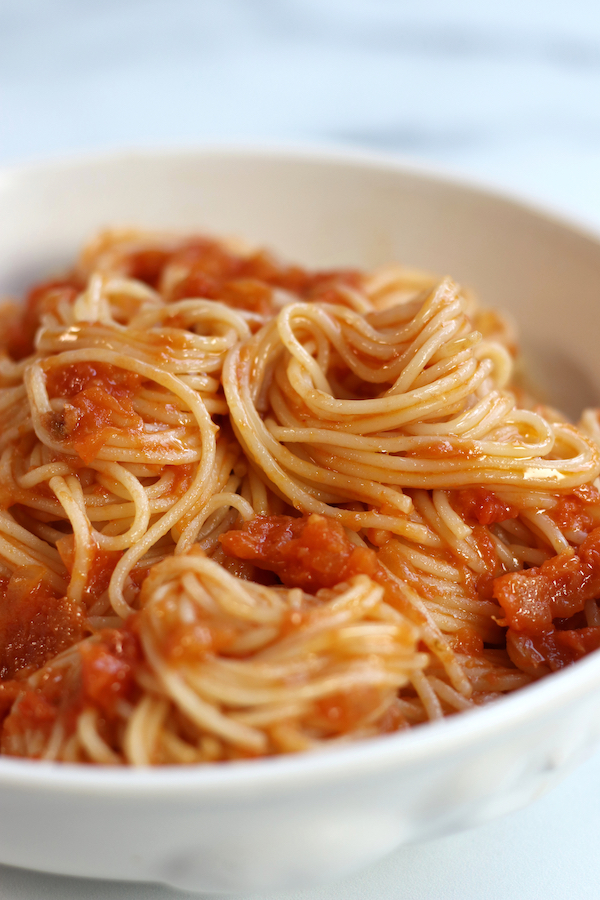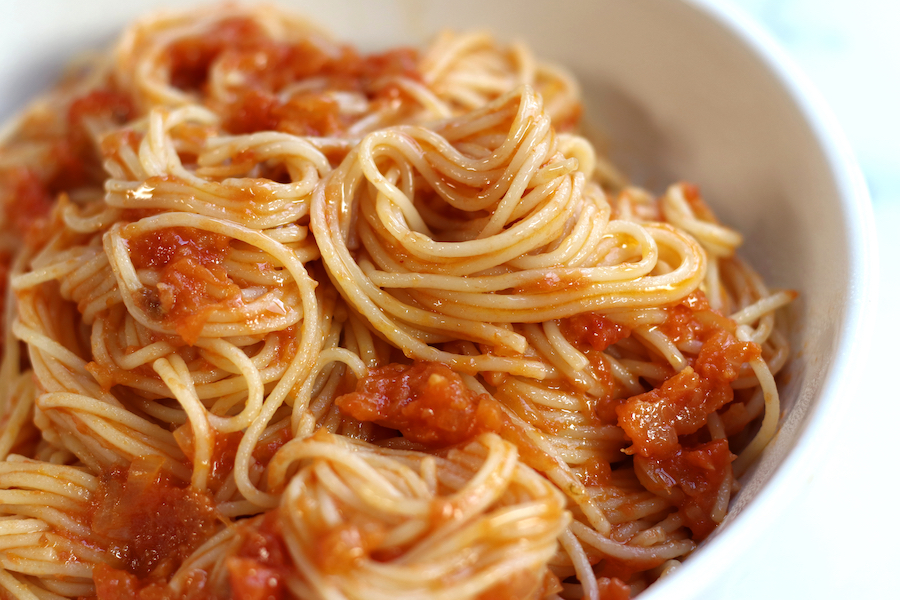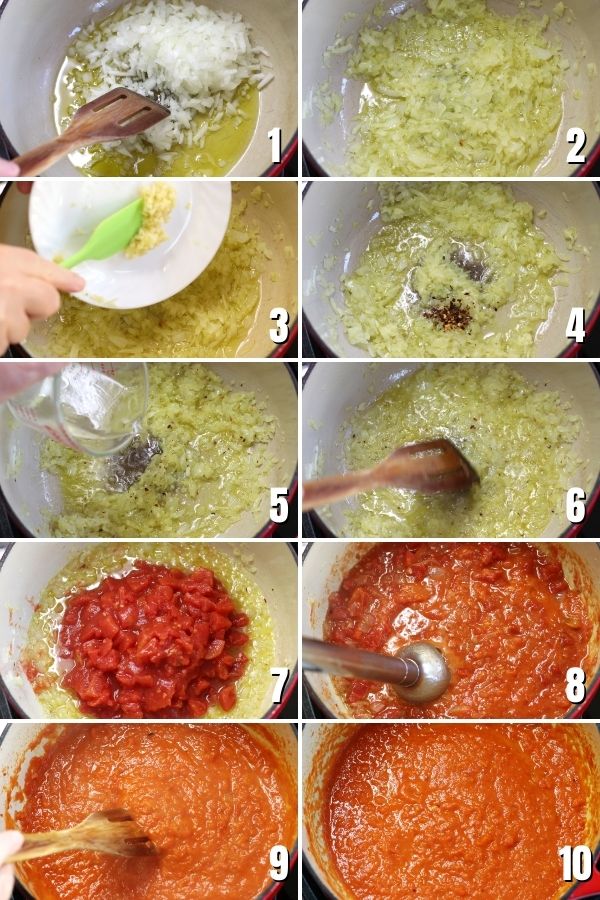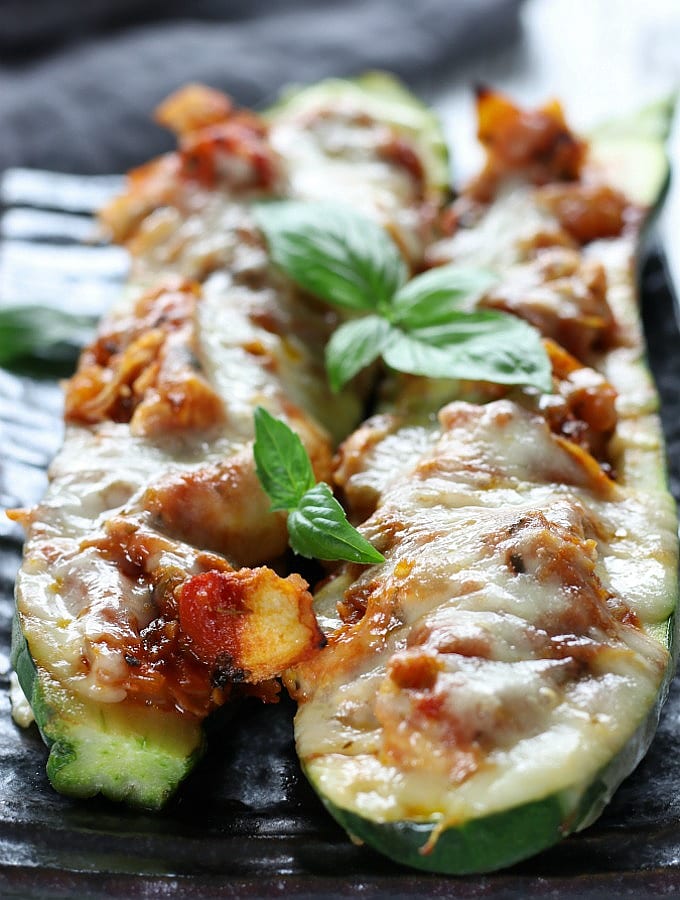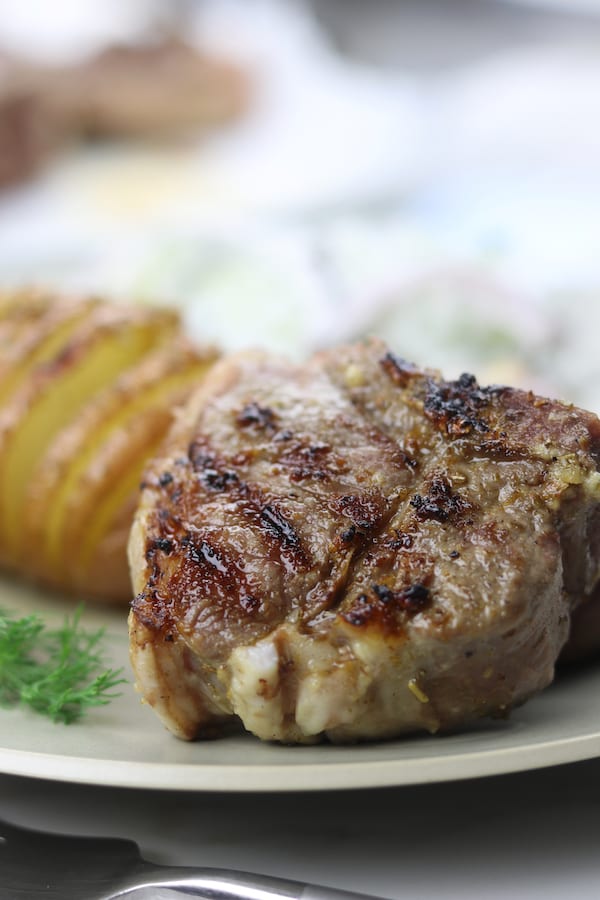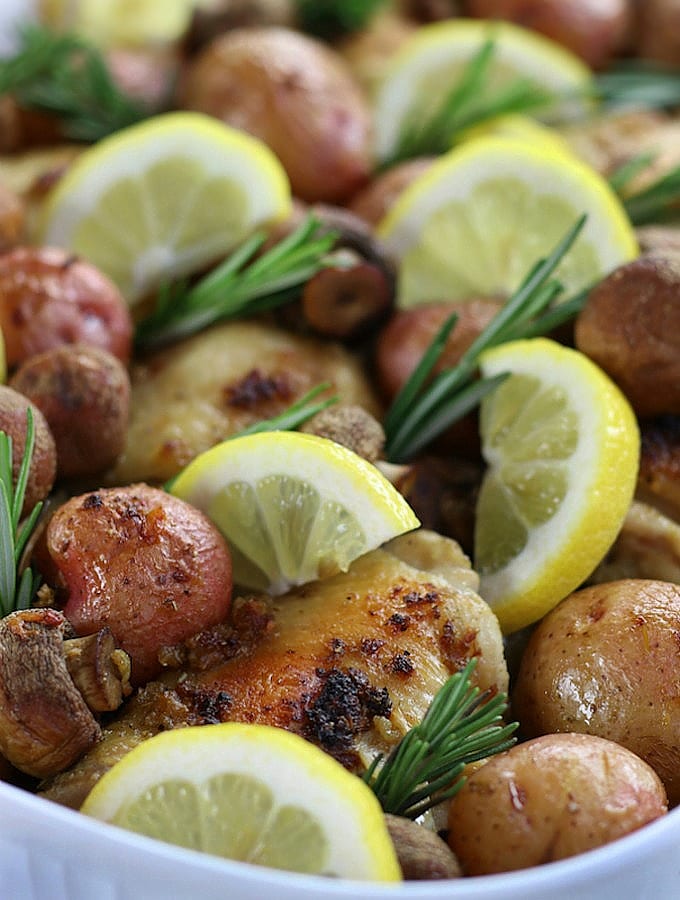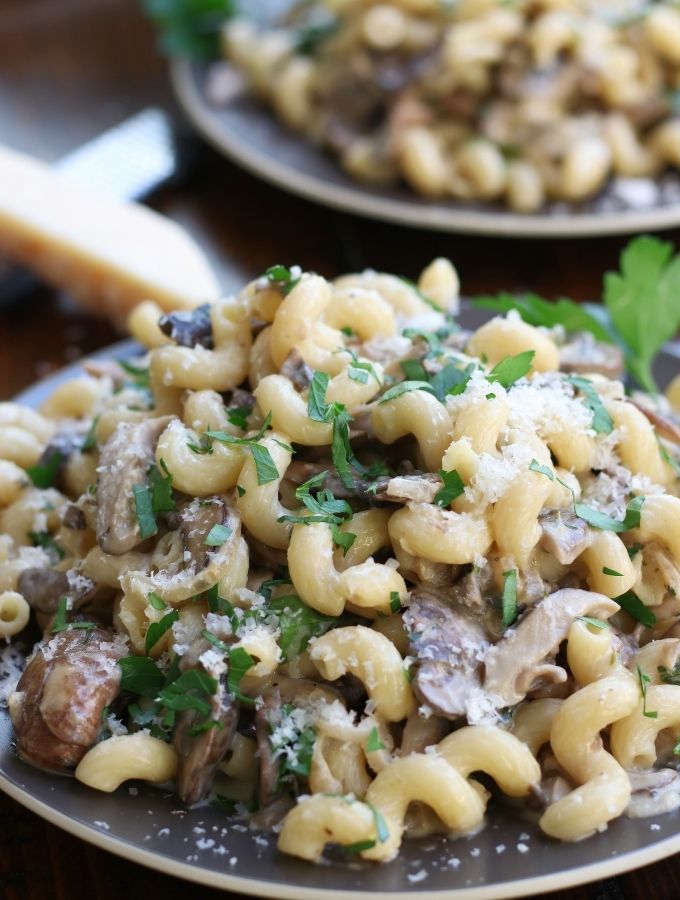Simple Pomodoro Sauce
Simple Pomodoro Sauce is a light and tasty basic sauce that is at the heart of Italian cooking. Use this as the base for many Italian recipes or as a quick and easy weeknight dinner served over pasta.
This post may contain affiliate links which I earn a small portion in sales if a purchase is made. Rest assured though, it is never at any additional cost to you.
What is Pomodoro Sauce?
In Italy, Pomodoro Sauce is the foundation of Italian cooking to the point that they call this sauce “sugo”, which simple means sauce. It is a light and very simple tomato sauce that can be used over pasta for a quick meal or is at the base of more complex recipes.
Italians generally make this sauce with small sweet fresh tomatoes during peak season. However, many will use canned tomatoes or tomato purée when fresh tomatoes are no longer available. Also, some prefer the sauce to be smooth while other prefer a chunkier texture. Additionally, there are several personal preferences to the basic ingredients.
Difference between Marinara vs Pomodoro Sauce
For Italian home cooks marinara sauce and Pomodoro sauce are essentially one and the same. You can find all kinds of explanations online that it is the consistency of the sauce that makes them different. However, when you study what is actually happening in Italian kitchens, it is the same sauce. However, it is important to note that each home cook seems to have a slightly different variation of this basic recipe.
Where the difference between the two sauces appears to have sprung from is among chefs. To date, Marinara Sauce or Neapolitan Sauce is a slow cooked and fully flavored sauce. In contrast, Pomodoro Sauce is a quick and light sauce that can be eaten as is or used for more complex recipes. It is important to note, even among chefs there are differences in how they describe these two sauces.
Ingredients Needed
- Good Quality Olive Extra Virgin Olive Oil– It is best to look for a harvest date rather than a best by date. Additionally, look for an estate or mill name as this is a sign that the olive oil is genuine. However, check out this article if you just want to be directed immediately to a good quality olive oil.
- Yellow Onion (aka Brown Onion)– The onion will need to be finely minced. Additionally, the longer the onion is sautéed to the point of caramelization, the more it will cut the acidity of the tomatoes.
- Fresh Garlic– Minced or crushed, about 1 1/2 tablespoons.
- 28 ounces canned peeled tomatoes– The quality of your Pomodoro Sauce will be heavily influenced by the type of tomatoes used. For many home cooks here in the US who are trying to get dinner on the table quickly, San Marzano Tomatoes are a wonderful option.
- Crushed Red Chili Pepper Flakes– This is an optional ingredient and can be removed for anyone who is sensitive to spice.
- Dry White or Red Wine– The addittion of wine is not generally a traditional ingredient. However, it adds delicious undertones of flavor. Adding red wine will give the sauce more of a richness whereas white wine will add more of a fruity flavor.
- Salt
Step by Step Instructions
- Heat a large skillet or enameled dutch oven over medium-low heat. Add oil and minced onions. Sauté stirring often until soft, about 12-15 minutes.
- What the onions will look like when sautéd until soft. Cooking the onions longer, to caramelization, will add sweet undertones to the Pomodoro Sauce.
- Add the garlic and continue sautéing for another 2-3 minutes.
- Add crushed red chili pepper flakes and continue sautéing for another minute.
- Increase heat to medium and pour in the wine.
- Bring wine to a simmer, stir and cook for 1-2 minutes.
- To the onion mixture add tomatoes and salt. Stir well.
- Using an immersion blender, blend to desired consistency.
- Cook stirring often until sauce thickens slightly, about 15-20 minutes.
- What the sauce will look like once done cooking.
What to Use Pomodoro Sauce For
This Pomodoro Sauce recipe is a basic sauce that can be used in Chicken Parmesan, Eggplant Parmesan, Chicken Sorrentino and all kinds of Italian meals. However, fresh or dried herbs are often added to make a complete flavor profile for these recipes.
Since this recipe does not have herbs, it is delicious added to meatloaf and shrimp cocktail (in place of the ketchup). Also, it is wonderful in beans, soup and with meatballs.
Variations to the Basic Sauce
- Celery and/or carrots, about 1-2 cups total that are finely minced may be added at the same time as the onions. Adding these aromatics will add a richer and deeper flavor.
- 3-4 tablespoons of tomato paste added at the same time as the tomatoes will intensify the tomato flavor.
- 1/2 cup of chopped fresh basil, oregano and/or rosemary helps to complete the Italian flavors when added in the last few minutes of simmering. (Note: Basil is the most common herb added to Pomodoro sauce. However, it is important to personalize with your favorite Italian herbs.)
- A total of 1-2 tablespoons of dried herbs such as basil, oregano or rosemary added at the same time as the crushed red chili pepper flakes also makes for a delicious final sauce.
- Add a Parmigiano-Reggiano rind after blending the tomatoes. The simmering will release the gorgeous flavor of the parmesan and the rind will not go to waste.
Making Ahead and Freezing
I highly recommend making this Pomodoro Sauce a day or two ahead of needing ahead. This is because as the sauce sits the flavors intensify and marry with one another. Or in other words, the sauce becomes incredibly pleasant to eat. Do not worry though if you don’t have time to make the sauce in advance. It still tastes wonderful immediately after cooking.
Additionally, making a larger batch of this sauce and freezing it will make for very easy weeknight cooking as this sauce freezes very well. Once made, let the sauce cool to room temperature and then store in either freezer bags or in airtight freezer containers. To use, simply let the sauce defrost in the refrigerator overnight.
More Ways to Blend Tomatoes
I personally adore my immersion blender because there is minimal clean up and very little effort to blending while cooking. I use it for making refried beans for homemade burritos, blending homemade gravy, homemade whipped cream, blending soups, salad dressings and all kinds of cooking projects.
For those who do not have an immersion blender, blend the tomatoes in either a food processor or blender prior to cooking. Make sure to finely mince the onions and cook to a minimal caramelization. This will ensure that the onions melt in your mouth since they will not be blended.
More Delicious Italian Recipes
Peposo (Tuscan Black Pepper Red Wine Stew)
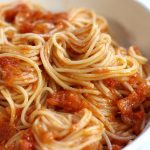
Simple Pomodoro Sauce
Ingredients
- 1/4 cup extra virgin olive oil *plus 2-3 tablespoons extra for drizzling
- 1 medium yellow onion (aka brown onion) *finely minced, about 1 1/2 cups
- 6 cloves garlic *crushed or minced, about 1 1/2-2 tablespoons
- 1/8 teaspoon crushed red chili pepper flakes *optional
- 1 28 ounce can peeled tomatoes
- 1/4 cup wine *See Note #1 below
- 1/2 teaspoon salt *See Note #2 below
Instructions
- Heat a large skillet or enameled dutch oven over medium-low heat.
- Add oil and minced onions. Sauté stirring often until soft, about 12-15 minutes. See Note #3
- Add the garlic and continue sautéing for another 2-3 minutes.
- Add crushed red chili pepper flakes and continue sautéing for another minute. See Note #4
- Increase heat to medium and pour in the wine. Bring wine to a simmer, stir and cook for 1-2 minutes.
- Stir in tomatoes and salt.
- Using an immersion blender, blend to desired consistency. See Note #5
- Cook stirring often until sauce thickens slightly, about 15-20 minutes. See Note #6Once cooked, drizzle 2-3 tablespoons of extra virgin olive oil onto the sauce and stir well.
- Serve over pasta or use as the base in a multitude of Italian dishes. See Note #7

